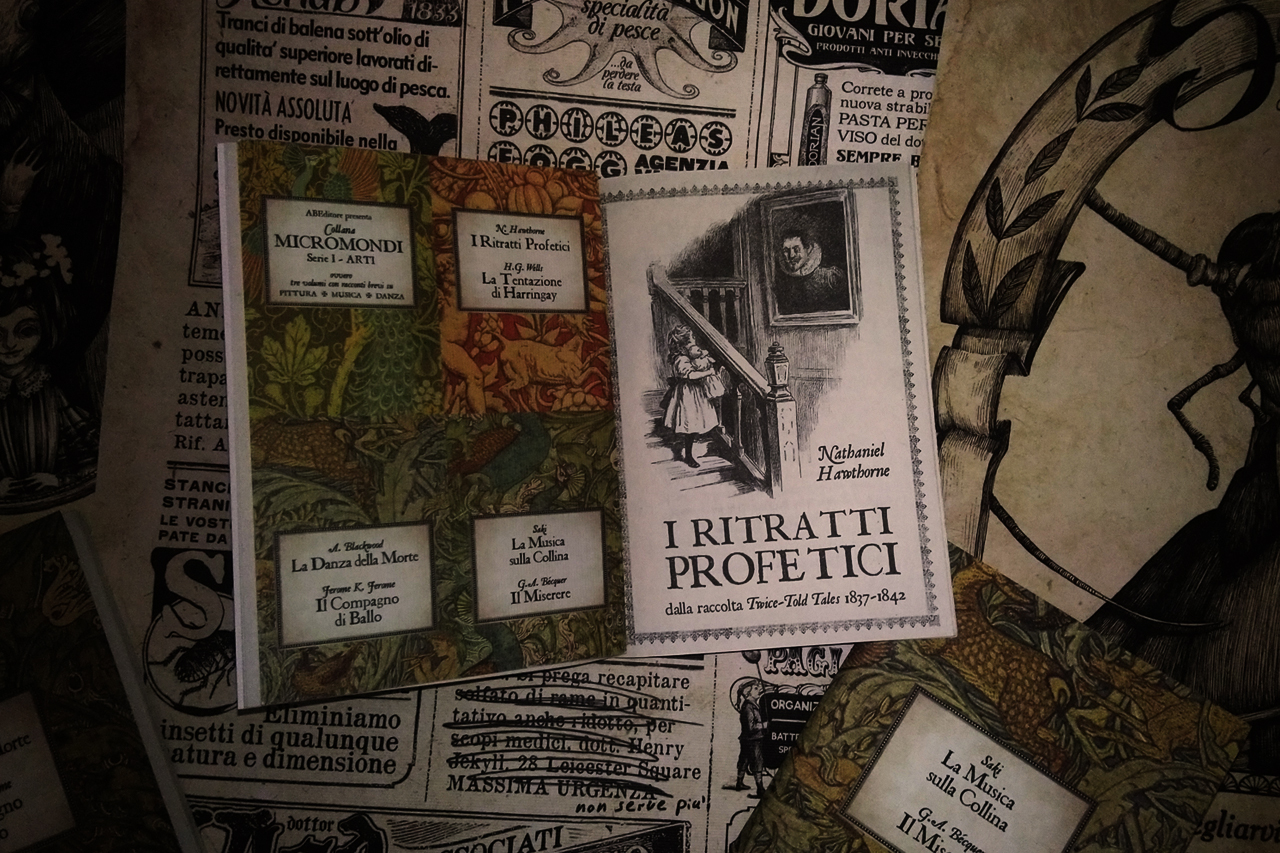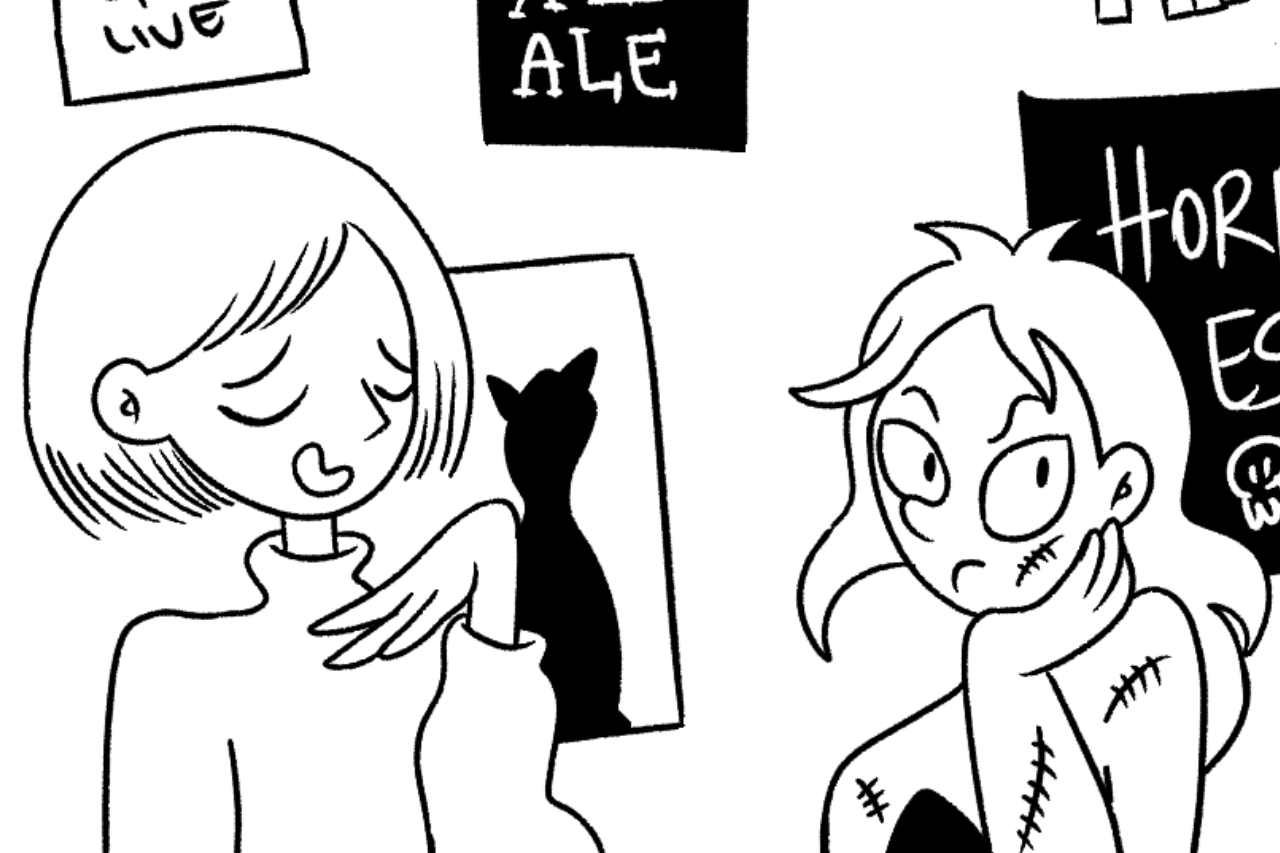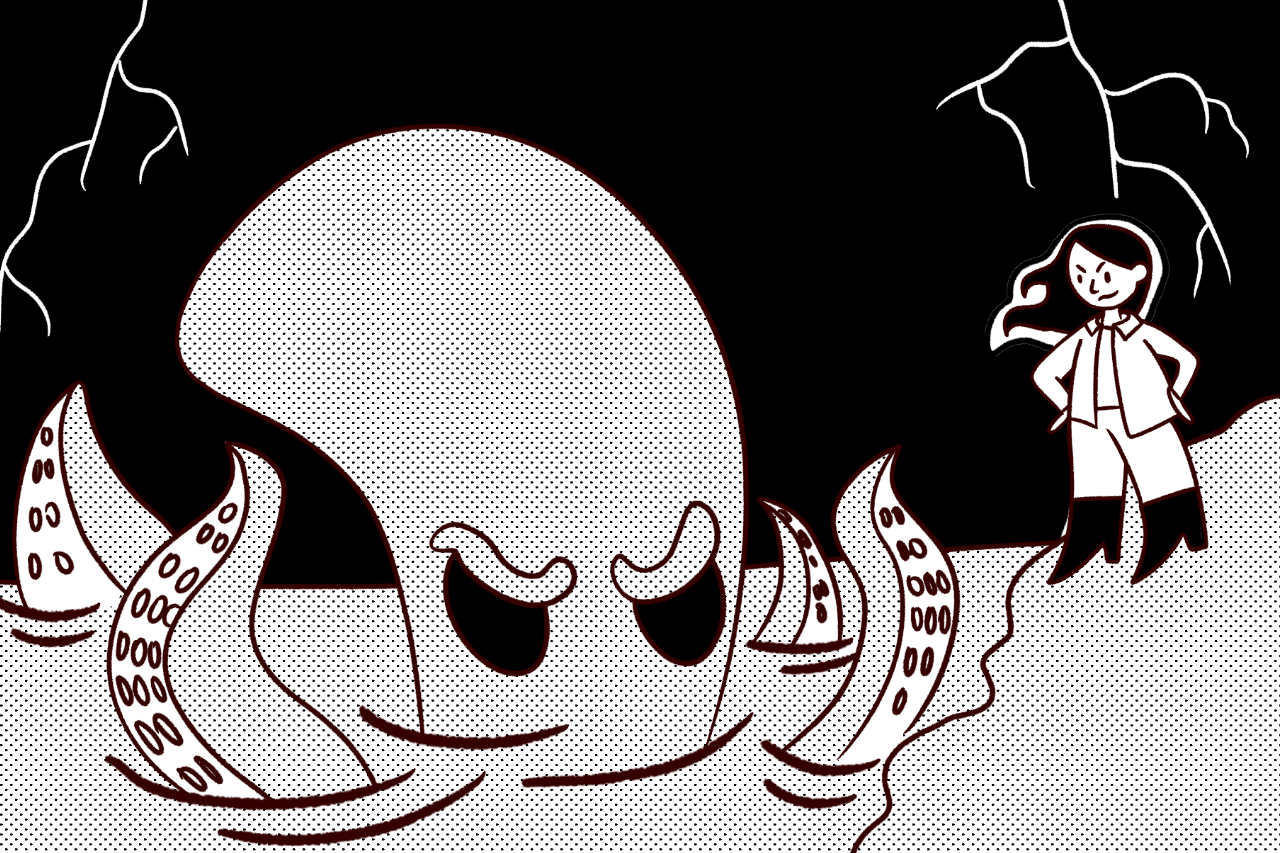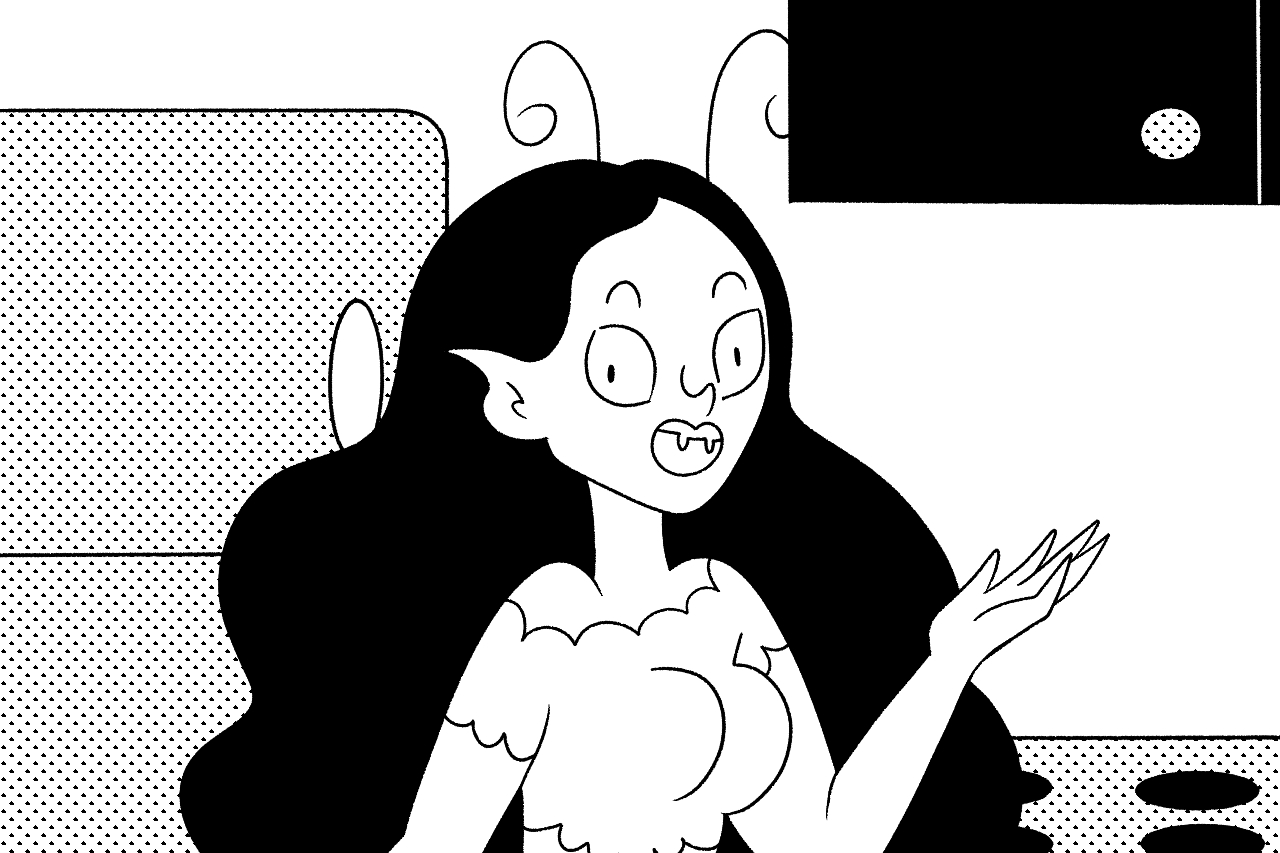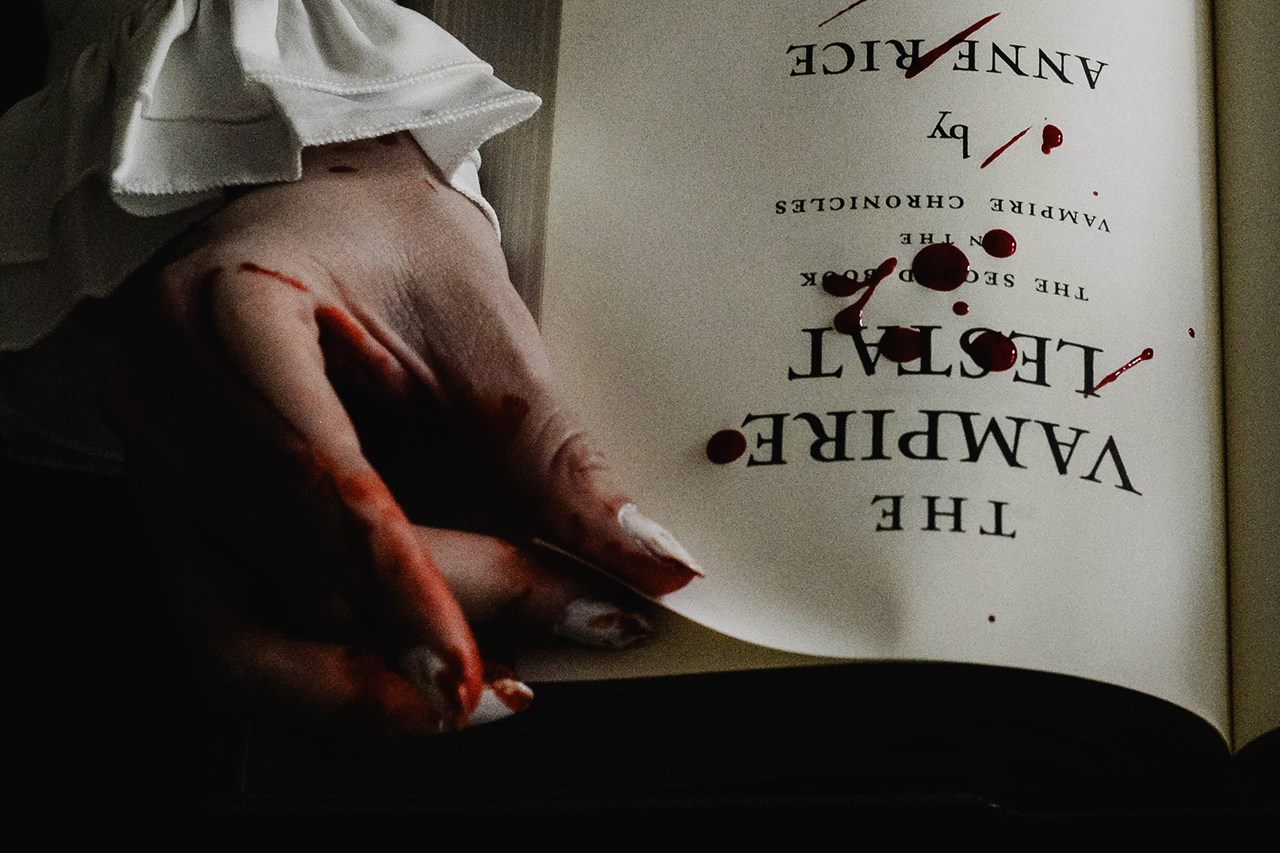The Prophetic Pictures is a story by Nathaniel Hawthorne we’ve been able to read thanks to ABEditore and their collection titled Micromondi and, specifically, in the mini-collection focused on art, in the paintings section. Author of the better-known The Scarlet Letter, he published this and other stories in the Twice-Told Tales collection. All the stories in it, in fact, had already been published in the past in various magazines.
Even though it’s very brief, the story doesn’t lack depth and points of reflection and it certainly deserves our attention and that of those who will give it a chance.
The Prophetic Pictures – Plot
Walter Ludlow and young Elinor, on the eve of their wedding, decide to commission a portrait from a famous painter whose works are so perfect as to seem alive on the canvas. There is even a rumour that they are more real than the original subjects and that the painter is capable of extracting the true essence of the subjects he portrays.
Review
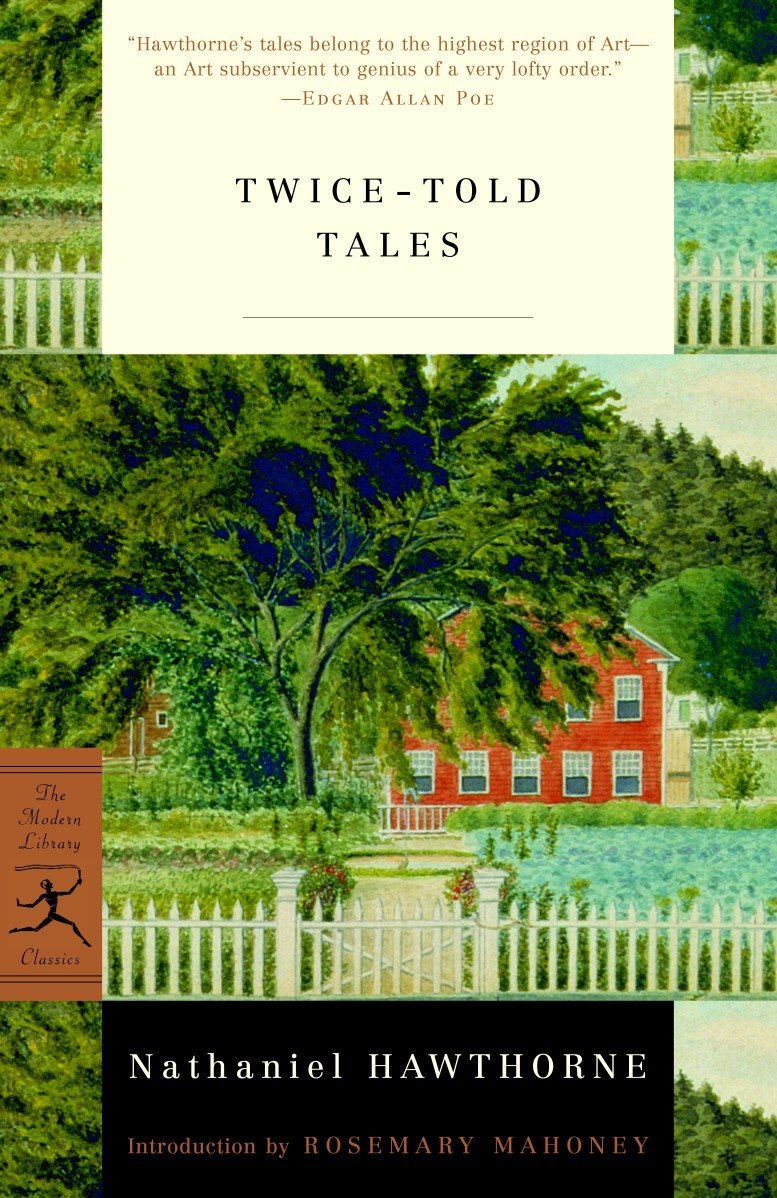
Twice-Told Tales by Nathaniel Hawthorne
Amazon UK – Book Depositary – Awesome Books
Without going into detail on the highly curated edition that ABEditore compiled and that is in itself a small jewel, the story puts forth many ideas for reflection on several points of view. Even though it’s very brief, it manages to deal with a number of themes, starting from its main characters and a series of backgrounds that makes us reflect on themes that we have, indeed, already addressed and yet we will continue to handle because they are very close to our hearts.
The meeting of Arts
We have already talked about how literature very often mentions other types of art by making them an important part, or even better, a central theme in its plots. Some examples of this are Luigi Capuana‘s La Redenzione dei Capilavori, parts of the Il Giglio Nero collection, or even Il Vecchio Ritratto by Nisbet and Strange Event in the Life of Schalken the Painter by Le Fanu. All that without even mentioning The Picture of Dorian Gray that we promise we will eventually discuss.
Portraits, in general, seem to have the power of capturing the soul of their subjects. That’s true for the works we already mentioned and also for the one we’ll be looking at today. The artist – his name is never mentioned – has indeed the talent of capturing the soul, but not just that. Very often, the expressions on his characters aren’t even visible on his subjects yet. Or, at the very least, they weren’t at the time the portraits were conceived, but they would only some years later. That’s also what happens with the portraits of the two young newlyweds where the woman is pictured with a sad and gloomy expression, while the man has a weird light in his eyes. The mystery is, of course, only resolved at the end of the story. However, there are a series of details we will be looking at more closely in the next section.
Portrait and prophecies
To be entirely honest, it’s hard to say how accurate it would be to call the artist’s portrait an actual and veritable prophecy. It has to be said that the expressions he paints do end up appearing on the faces of its protagonists and they also do so at the same instant. As if the two portraits are part of a wider work and were only just extrapolated for an unknown reason.
The events we will discover at the end are hinted to already inside the painting and, to be quite fair, it seems that Elinor has already perfectly understood the meaning of the gaze that looks at her from the canvas. And if she understands it, if she really has already seen the fate that expects her and will befall her, she also didn’t want to avoid it. Yet we are left with the question, as it often happens in prophetic traditions ever since the story of Oedipus, of whether knowing the prophecy is exactly what makes it come true.
The doubt remains, however, of whether the artist might be a sorcerer or a diviner. In Hawthorne’s version, it is a likely possibility or, at the very least, that’s what we’d like to think for love of the plot and the mystery itself. We’d like to believe that, yes, the painter’s prediction is indeed a true prophecy and that with his art, he – or something higher through him – wants to send messages to those who are portrayed. However, destiny might be such exactly because inescapable, and whatever road one tries to take to elude it, it will always find a way to reach its own fulfilment.
